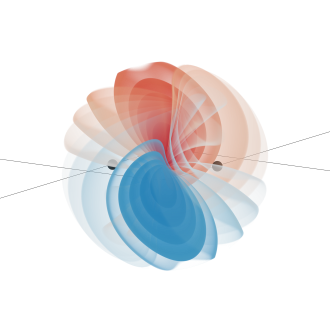News release
From:
Theoretical physics: Solving the two-body problem (N&V) *IMAGES & VIDEO*
A high-precision prediction of the gravitational waves produced by interacting black holes is presented in Nature this week. The work may pave the way for more accurate gravitational wave models, which will guide future efforts to detect gravitational waves.
Einstein’s theory of general relativity predicts that when two massive objects, like black holes or neutron stars, interact, they emit gravitational waves. These waves are ripples in space-time that can be detected with special observatories that detect minuscule changes in the length of the detector — and of space itself — in different directions. Interpretation of observations from gravitational wave detectors requires highly accurate models of what the signals might look like. Numerical models provide approximations, but the process is slow (it can take weeks as predictions of an object’s trajectory are refined over many steps) and is computationally expensive.
Jan Plefka and colleagues take a different approach using perturbation theory, which starts with solving a simple approximation to a problem and then solving the more complex details in incremental sequences. They tackle the two-body problem of how interactions between two identical objects affect gravitational wave emissions. Specifically, they ask what happens when two black holes or neutron stars pass by each other. The results are a highly precise, analytic solution of the gravitational waves produced by this interaction. A key finding was that mathematical structures known as Calabi–Yau manifolds (six-dimensional analogues of donut-shaped spaces) appear in these solutions, and not in simpler approximations. These mathematical inventions have not previously been directly linked to a measurable quantity. The structures help describe the energy emitted during the scattering of the waves.
In an accompanying News & Views commentary, Zhengwen Liu describes the model presented by Plefka and colleagues as having landmark precision. “Their high-precision results will drive the development of even more-accurate models of gravitational waves. These will be crucial to interpreting observations from future gravitational-wave experiments, such as the Einstein Telescope in Europe and the space-based Laser Interferometer Space Antenna (LISA),” Liu writes.
Multimedia





 International
International



